Vitals
- Locale: Lyons Falls, New York
- What It's Like: Possibly the most essential river in New York. Big pool/big drop kayaking.
- Class: IV-IV+ (V) pool drop.
- Scouting/Portaging: Easy.
- Level: Good online gauge - USGS Moose River at Mckeever.
- Time: 1-3 hours.
- When To Go: Spring snowmelt, or after rain.
- Info From: Many visits.
- Other Beta: None.
- Map: Click here for a map of the shuttle.



Description
This page was last updated in January 2009 and it is not regularly maintained. Information may be inaccurate.
What is there to say about the Moose that hasn't already been said? But, what kind of guide talks about the northeast and doesn't pay homage to this classic river? The Moose River is steeped in whitewater history - it's one of American Whitewater's first success stories. It's home to one of the great whitewater festivals: Moosefest. On top of all that, the Moose has several good sections of river, with the bottom section being the most (in)famous of them all.
The Bottom Moose is the ultimate example of the pool-drop kayaking you find all over New York and other parts of the northeastern US and eastern Canada. It has some high quality, fairly big rapids, but it also has some low quality, fairly big flat sections. The rapids make it a worthwhile trip though. Despite the hype, the Moose isn't a real class V run and due to its pool/drop character it is accessible to confident class IV boaters with good guides and judicious scouting and portaging.
The Moose is runnable at a wide range of flows; the normally accepted low-to-high range is about 2.5 to 6.0 feet. It can be run higher, with a corresponding increase in difficulty. For comparison (at 3.5 feet - medium), it's at about the same level in difficulty as the Twin Falls section of the Grass, and a bit easier than the Stone Valley section of the Raquette. Keep in mind that a "release" actually only puts water in the bottom half of the Bottom Moose and it only lets the natural flow go down the river rather than through the power plant, so the river needs to be at 2.5 as a minimum, even during a release. Once the river gets to 4.5 it will spill over the dam half way down even if they're diverting the maximum amount of water, so it can run when no releases are scheduled, particularly in the spring. Directions to the Moose are well described on American Whitewater. There's good camping on the river right side of the put in bridge.
After the first pool at the put in bridge of the Moose, things start with a bang. The first rapid is a tall slide called Fowlersville Falls that's typically run down the far left. The hole in the center is bad at all levels, and becomes a limiting factor to running the drop at high levels. It is pronounced pool-drop action below here - the next three rapids are called Funnel, Knife's Edge and Double Drop. After double drop is a large dam that is sometimes runnable if the water is high.
After the large dam is the biggest flat section on the river. It ends at a small dam and an easy waterfall called Agers Falls. The action below Agers is a little more stacked than the first half of the river, with three major rapids called Shurform, Powerline and Crystal. At high flows Powerline and Crystal are essentially one rapid and flushing uncontrolled into Crystal is not a good idea. Crystal is a big rapid with multiple lines that should be scouted. You can take out after Crystal, or you can fire up the final, optional rapid called Magilla and take out below it.
And for the Moose, that's it. Go get some, it's fun.
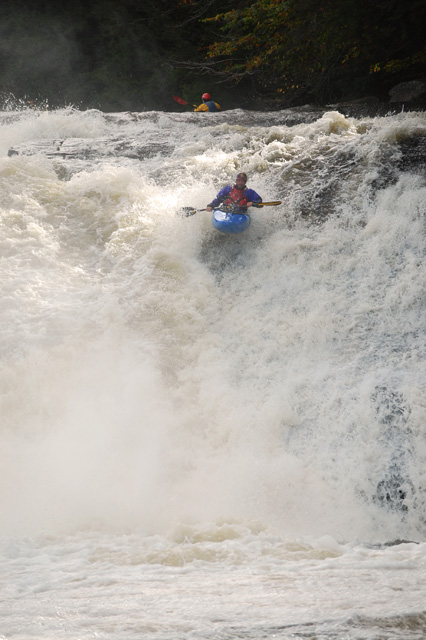 Standard issue Fowlersville Falls, the Bottom Moose's first drop.
Standard issue Fowlersville Falls, the Bottom Moose's first drop.
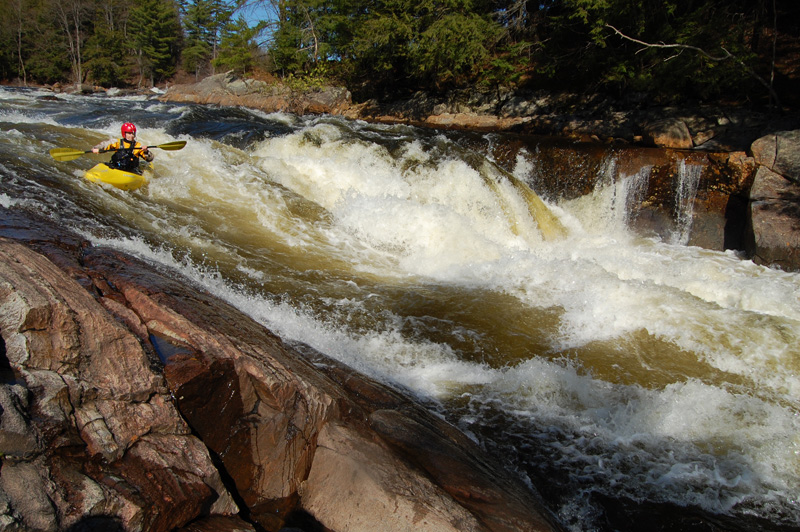 Rolling into the normal line at Funnel.
Rolling into the normal line at Funnel.
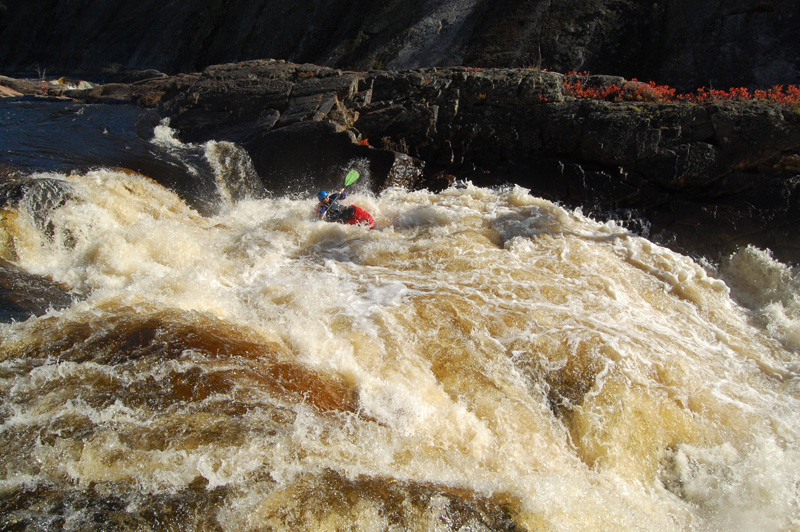 The center line at Knife's Edge at 4.5 feet or so. One of the best lines is the sweet boof on the right not in this photo.
The center line at Knife's Edge at 4.5 feet or so. One of the best lines is the sweet boof on the right not in this photo.
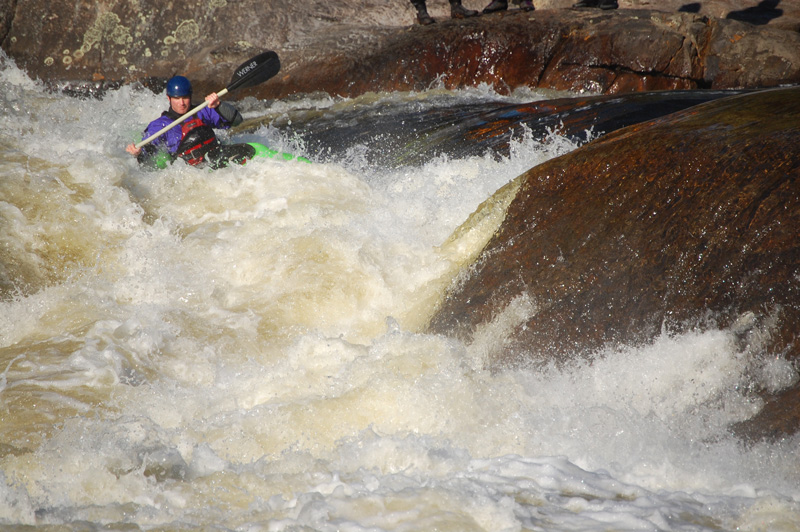 In the thick of the center line at Double Drop.
In the thick of the center line at Double Drop.
 Chris Koll at Agers Falls - Chris has more runs on the Moose than most people do on every river they've ever done.
Chris Koll at Agers Falls - Chris has more runs on the Moose than most people do on every river they've ever done.
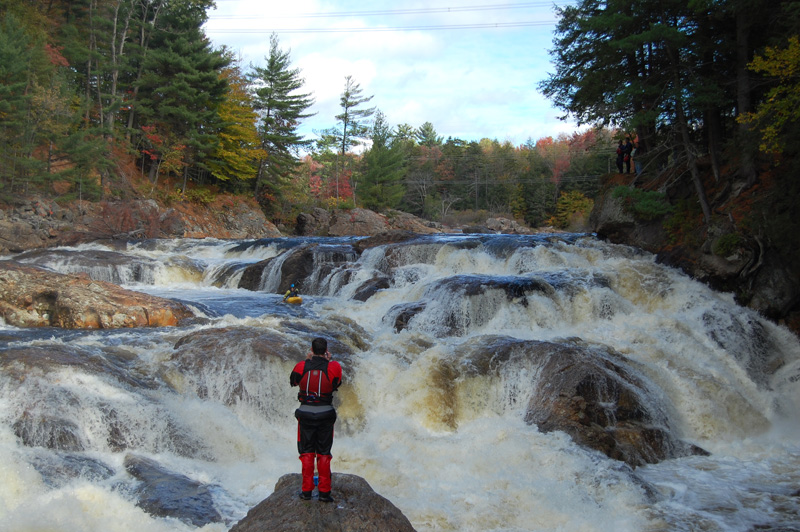 Checking out Crystal. It's a good one.
Checking out Crystal. It's a good one.
Updated Jan 8, 2009

